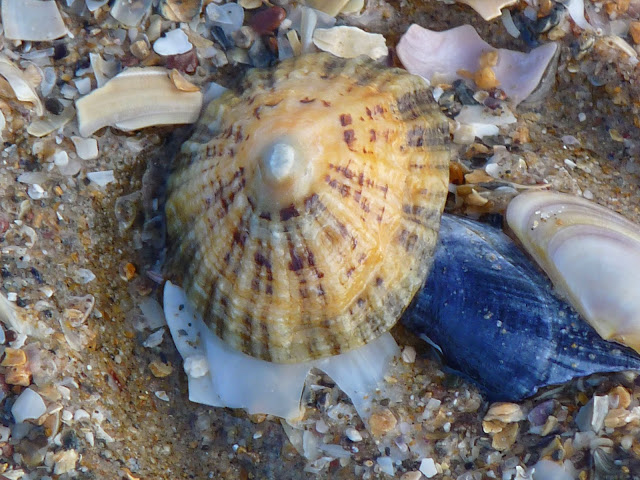We took a stroll along Rhossili Beach at the western end of the Gower Peninsula from Llangennith towards the promontory-cum-island of
Burry Holms on the north-western tip. There was a terrific surf and a lot of foam along the edge of the sea.
I took this photo below as I looked back towards Worm's Head. I was shooting into the sun, hence the grayscale appearance.
There was a strange mist sweeping in and out.
There were not many birds in evidence, but judging from the cracked shells, they frequent this huge expanse of sand in large numbers.
I found this stash of rather unsightly left-overs from a bird's meal (see below). Perhaps you know whether these are bits of Starfish or Sea Cucumber (Thyone fusus) . . .
I am wondering if they match the images here against the entry for 16 March 2008? In any case, it may interest you to know that there is a book of haiku on the subject of sea cucumbers (and other creatures) called 'Rise, Ye Sea Slugs: 1,000 holothurian haiku', compiled and translated by Robin. D Gill (Paraverse Press, Key Biscayne, Florida: 2003, reviewed here, lower right).
Burry Holms becomes an island twice a day as the tide comes in. The promontory boasts an Iron Age fort and the remains of a hermitage or chapel, supposedly built by Caradog in the 11th century. The site is dedicated to
St Cenydd (as in 'Llangennith'), who lived during the 6th century.
On our way back to the car, I was amused to find this official yellow sign pointing to a rather watery public footpath ...
I will add my shell photos in a future post.






















































